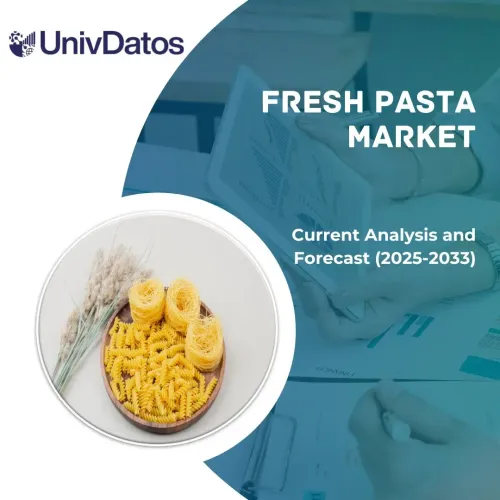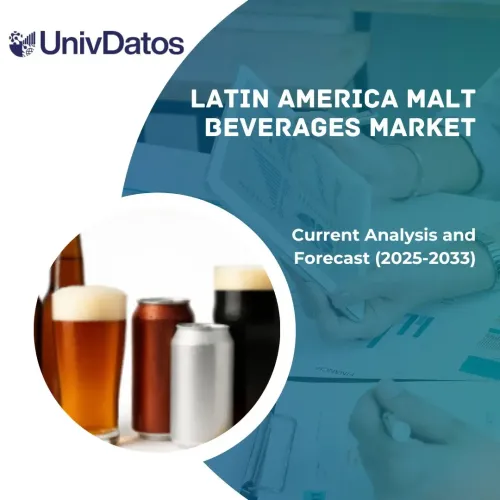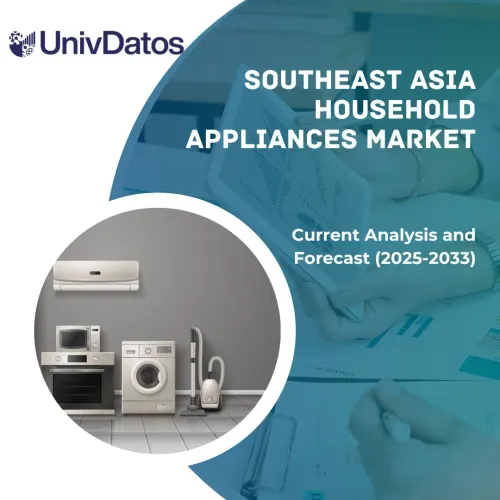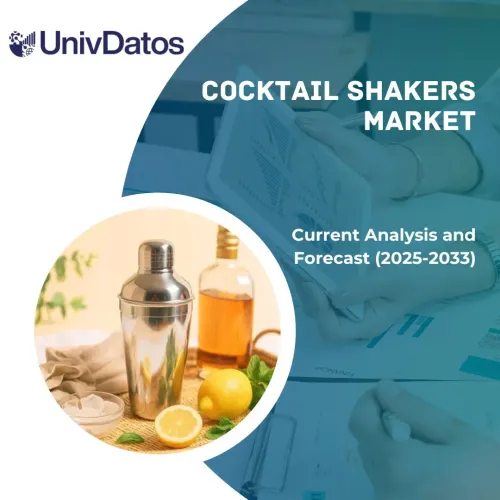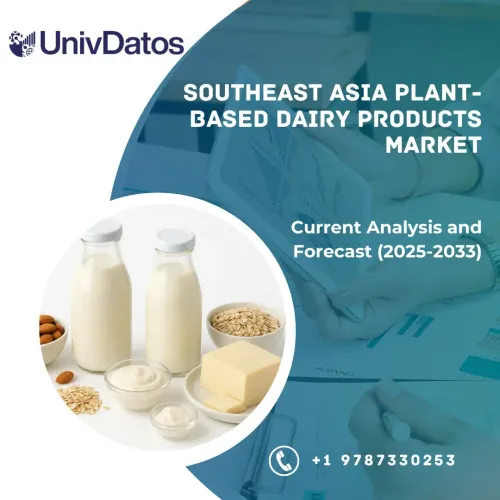- Home
- About Us
- Industry
- Services
- Reading
- Contact Us
Carbonated Soft Drink Market: Current Analysis and Forecast (2021-2027)
Emphasis on Flavour (Cola, Lemon & Lime, Orange & Others); Packaging Type (Bottles and Cans); Distribution Channel (supermarkets and hypermarkets, convenience stores and gas stations, food service outlets, online stores and others); Region/Country

Carbonated Soft Drink Market is expected to grow at a CAGR of around 7.85% over the forecast period (2021-2027). The Carbonated Soft Drink medical devices market is primarily driven by factors such as rising global population, shelf-stable innovations, eco-friendly packaging, made with clean, renewable materials, and fewer preservatives and chemicals, etc.
Carbonated soft drinks are non-alcoholic fizzy beverages produced using clean water, sugar, natural sweeteners or sugar substitutes (in diet drinks), caffeine, artificial flavoring elements, fruit juice concentrations, preservatives, and coloring agents. Coca-Cola, Sprite, Mountain Dew, and Monster are some of the most popular soft drink brands consumed all over the world. The beverages have a slightly acidic taste and offer a pleasant tingling and cooling sensation with every sip. The availability of carbonated soft drinks in a wide variety of fruit flavors has boosted their demand among consumers. Carbonated soft drinks are usually available at convenience stores, fast-food restaurants, casual dining restaurants, movie theaters, dedicated soda stores, and vending machines.
Some of the major players operating in the market include Pepsico, Inc., The Coca-Cola Company, Postobón S.A., National Beverage Corp., Cott Corporation, F&N foods pte Ltd, Bickford’s Australia Pty Ltd, Suntory Holdings Ltd., Reeds Inc., Keurig Dr Pepper Inc., etc. Several M&A’s along with partnerships have been undertaken by these players to boost their presence in different regions.
Insights Presented in the Report
“Amongst Flavour, Cola segment dominated the market in 2020”
Based on Flavour, the market is segmented into Cola, Lemon & Lime, Orange & Others. Of the different flavor segments, the cola segment leads the global market, accounting for over 50% of the overall market share in 2020. The rising demand for cola-flavored carbonated soft drinks worldwide is projected to boost this segment’s growth in the upcoming years. Manufacturers have been engaged in new product innovations, trying out new versions of the classic taste of Cola.
“Amongst Packaging Type, Bottle segment dominated the market in 2020.”
Based on Packaging Type, the Carbonated Soft Drink market is segmented into Bottles and Cans. The Bottles segment contributed the maximum market to the Carbonated Soft Drink market. The bottles segment is projected to register the fastest growth rate over the estimated period. Soft drink manufacturers use various strategies, product innovations, to build on their customer bases.
“Amongst Distribution Channel, Food service outlets holds significant market share in 2020.”
Based on Distribution Channel, the Carbonated Soft Drink market is segmented into supermarkets and hypermarkets, convenience stores and gas stations, food service outlets, online stores and others. Food service outlets holds the highest share in the Carbonated Soft Drink market. The global carbonated soft drink market is broadly categorized into soft drinks and sports & energy drinks. The rapidly surging demand for carbonated drinks in a variety of unique flavors is a key factor behind the growth of this segment.
“North America represents as the largest market.”
For a better understanding of the market adoption of Carbonated Soft Drink, the market is analyzed for the countries such as North America (US, Canada, Rest of North America), Europe (Germany, United Kingdom, France, Italy, Spain, Rest of Europe), Asia-Pacific (China, Japan, India, Australia, Rest of Asia- Pacific), & Rest of World. North America dominated the market in 2020. The high and growing global population, shelf-stable innovations, eco-friendly packaging, made with clean, renewable materials, and fewer preservatives and chemicals, etc. all contribute to the North American region’s big proportion. The United States is also home to the great majority of worldwide players, making it a hotbed of innovation in the Carbonated Soft Drink business.
Reasons to buy this report:
- The study includes market sizing and forecasting analysis validated by authenticated key industry experts
- The report presents a quick review of overall industry performance at one glance
- The report covers an in-depth analysis of prominent industry peers with a primary focus on key business financials, product portfolio, expansion strategies, and recent developments
- Detailed examination of drivers, restraints, key trends, and opportunities prevailing in the industry
- The study comprehensively covers the market across different segments
- Deep dive regional & country-level analysis of the industry
Customization Options:
Carbonated Soft Drink Market can further be customized as per the requirement or any other market segment. Besides this, UMI understands that you may have your own business needs, hence feel free to connect with us to get a report that completely suits your requirements.
Table of Content
Analyzing the historical market, estimation of the current market, and forecasting the future of the Carbonated Soft Drink Market were the three major steps undertaken to create and analyze the adoption of Carbonated Soft Drink across various regions globally. Exhaustive secondary research was conducted to collect the historical market numbers and estimate the current market size. Secondly, to validate these insights, numerous findings and assumptions were taken into consideration. Moreover, exhaustive primary interviews were conducted, with industry experts across the value chain of the industry. Post assumption and validation of market numbers through primary interviews, we employed a top-down/bottom-up approach to forecast the complete market size. Thereafter, market breakdown and data triangulation methods were adopted to estimate and analyze the market size of segments and sub-segments the industry pertains to. Detailed methodology is explained below.
Analysis of Historical Market Size
Step 1: In-Depth Study of Secondary Sources:
Detailed secondary study was conducted to obtain the historical market size of the Carbonated Soft Drink through company internal sources such as annual report & financial statements, investor presentations, press releases, etc., and external sources including journals, news & articles, government publications, competitor publications, sector reports, third-party database, and other credible publications.
Step 2: Market Segmentation:
After obtaining the historical market size of the Carbonated Soft Drink, we conducted a detailed secondary analysis to gather historical market insights and share for different segments & sub-segments for major regions. Major segments included in the report are by product, technology, application, and by end-user. Further regional & country-level analyses were conducted to evaluate the overall adoption of the Carbonated Soft Drink Market in the global context.
Step 3: Factor Analysis:
After acquiring the historical market size of different segments and sub-segments, we conducted a detailed factor analysis to estimate the current market size. Further, we conducted factor analysis using dependent and independent variables such as rising global population, shelf-stable innovations, eco-friendly packaging, made with clean, renewable materials, and fewer preservatives and chemicals, etc. Historical trends and their year-on-year impact on the market size and share was analyzed. Demand and supply side scenario was also thoroughly studied.
Current Market Size Estimate & Forecast
Current Market Sizing: Based on actionable insights from the above 3 steps, we arrived at the current market size, key players in the Market, and market shares of the segments and company. All the required percentage split, and market breakdowns were determined using the above-mentioned secondary approach and were verified through primary interviews.
Estimation & Forecasting: For market estimation and forecast, weights were assigned to different factors including drivers & trends, restraints, and opportunities available for the stakeholders. After analyzing these factors, relevant forecasting techniques i.e., top-down/bottom-up approach was applied to arrive at the market forecast to 2027 for different segments and subsegments across the major regions globally. The research methodology adopted to estimate the market size encompasses:
- The industry’s market size, in terms of value (US$)
- All percentage shares, splits, and breakdowns of market segments and sub-segments
- Key players in the Carbonated Soft Drink Market in terms of products & services offered. Also, the growth strategies adopted by these players to compete in the fast-growing market.
Market Size and Share Validation
Primary Research: In-depth interviews were conducted with the Key Opinion Leaders (KOLs) including Top Level Executives (CXO/VPs, Sales Head, Marketing Head, Operational Head, and Regional Head, Country Head, etc.) across major countries. Primary research findings were then summarized, and statistical analysis was performed to prove the stated hypothesis. Inputs from primary research were consolidated with secondary findings, hence turning information into actionable insights.
Split of Primary Participants in Different Regions
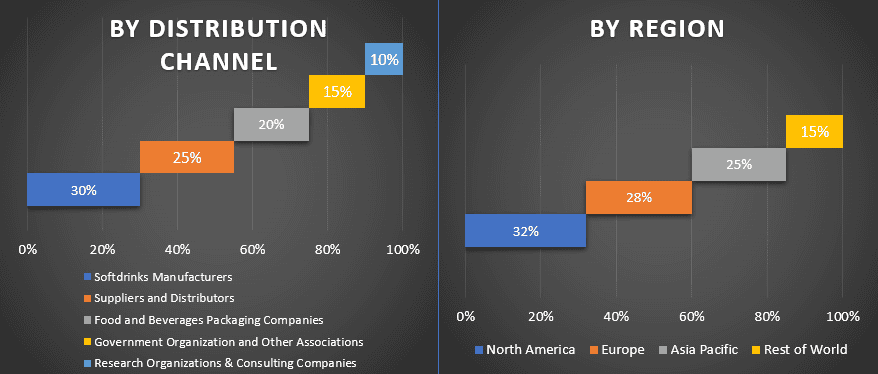
Market Engineering
Data triangulation technique was employed to complete the overall market estimation and to arrive at precise statistical numbers of each segment and sub-segment of the Carbonated Soft Drink Market. Data was split into several segments & sub-segments post studying various parameters and trends in the areas of product, technology, application, and end-users for the major country/region globally.
The main objective of the Carbonated Soft Drink Market Study
The current & future market trends of Carbonated Soft Drink were pinpointed in the study. Investors can gain strategic insights to base their discretion for investments from the qualitative and quantitative analysis performed in the study. Current and future market trends would determine the overall attractiveness of the market at a regional & country level, providing a platform for the industrial participant to exploit the untapped market to benefit as a first-mover advantage. Other quantitative goals of the studies include:
- Analyze the current and forecast market size of Carbonated Soft Drink in terms of value (US$). Also, analyze the current and forecast market size of different segments and sub-segments
- Segments in the study include of flavor, packaging type,, and distribution channel
- Analyze the current and forecast market size of the Carbonated Soft Drink for the major regions & countries
- Major regions studied in the report include North America (United States, Canada, Rest of North America), Europe (Germany, United Kingdom, France, Italy, Spain, Rest of Europe), Asia Pacific (China, Japan, India, Australia, Rest of Asia- Pacific), and Rest of World
- Company profiles of the Carbonated Soft Drink Market players and the growth strategies adopted by them to sustain in the fast-growing market
- Deep dive regional & country level analysis of the industry
Related Reports
Customers who bought this item also bought

